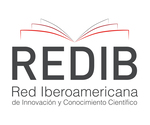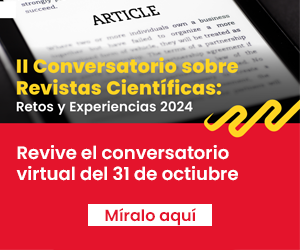Cardiogenic shock and hyperlactatemia in a patient with Shoshin Beriberi in a general hospital in Lima, Peru. A case report
DOI:
https://doi.org/10.20453/rmh.v35i4.5211Keywords:
Cardiogenic shock, beriberi, thiamineAbstract
Introduction: Shoshin Beriberi is a disease generated by thiamine deficiency and is characterized by acute fulminant cardiac dysfunction (1). Objective: To highlight cardiogenic shock and hyperlactacidemia in a patient with shoshin beriberi in an intensive care unit of a general hospital. Material and method: The information was taken from the electronic medical history of the intensive care unit (ICU) of the Cayetano Heredia National Hospital (HNCH) and from laboratory and image records. Case: 22-year-old female patient, with a history of anorexia nervosa, multisystem tuberculosis (TBC); with abdominal pain, vomiting, oral intolerance, prolonged fasting, received total parenteral nutrition (TPN) without thiamine intake and with hospitalization for 40 days on the general floor; Admission to the ICU in cardiogenic shock and hyperlactacidemia with serum lactate 13.8 mmol/L. With sepsis ruled out, an acute vascular event and cardiogenic shock refractory to the use of norepinephrine, vasopressin and dobutamine, the diagnosis of shoshin beriberi was considered and 300 mg of intravenous thiamine was administered, with a rapid response, achieving hemodynamic and cardiopulmonary stabilization, with subsequent discharge from ICU and hospital. Conclusion: Cardiogenic shock and hyperlactacidemia were manifestations of shoshin beriberi, with sepsis and acute vascular event ruled out and with the use of thiamine hemodynamic and cardiopulmonary stabilization was achieved.
Keywords: cardiogenic shock, hyperlactacidemia, shoshin beriberi, thiamine
Downloads
References
Lim MS, Win W, Von Essen A, Gannon D, Ramali M. Lessons of the month 1: Shoshin beriberi: A case report of fulminant cardiovascular collapse, intractable hyperlactatemia and deteriorating consciousness. Clin Med (Lond). 2021 Nov; 21(6):e670-e672. doi: 10.7861/clinmed.2021-0550.
Lonsdale D. A review of the biochemistry, metabolism and clinical benefits of thiamine and its derivatives. Evid Based Complement Alternat Med. 2006; 3:49–59. doi:10.1093/ecam/nek009
Seligmann H, Levi R, Konijn AM, Prokocimer M. Thiamine deficiency in patients with B-chronic lymphocytic leukaemia: a pilot study. Postgrad Med J. 2001; 77:582–5. doi: 10.1136/pmj.77.911.582
Kitamura K, et al. TPN-induced fulminant beriberi: a report on our experience and a review of the literature. Surg Today. 1996; 26:769–76. doi: 10.1007/BF00311635
Dabar G, Harmouche C, Habr B, Riachi M, Jaber B. Shoshin Beriberi in Critically-Ill patients: case series. Nutr J. 2015 May 17; 14:51. doi: 10.1186/s12937-015-0039-7.
Bello S, Neri M, Riezzo I, et al. Cardiac beriberi: morphological findings in two fatal cases. Diagn Pathol. 2011; 19:6–8. doi: 10.1186/1746-1596-6-8
Yamasaki H, Tada H, Kawano S, Aonuma K. Reversible pulmonary hypertension, lactic acidosis, and rapidly evolving multiple organ failure as manifestations of shoshin beriberi. Circ J. 2010; 74:1983–5. doi:10.1253/circj. CJ-10-0202
Roman-Campos D, Cruz JS. Current aspects of thiamine deficiency on heart function. Life Sci. 2014 March 7; 98(1):1-5. doi: 10.1016/j.lfs.2013.12.029
Imamura T, Kinugawa K. Shoshin Beriberi with Low Cardiac Output and Hemodynamic Deterioration Treated Dramatically by Thiamine Administration. Int Heart J. 2015; 56(5):568-70. doi: 10.1536/ihj.15-033.
Downloads
Published
How to Cite
Issue
Section
License
Copyright (c) 2024 Jaime Wilfredo Zegarra Piérola, Carla Cornejo Valdivia Cornejo Valdivia , Giancarlo Sante Farfán , Diana Callo Rodrigo, Lady Lévano Díaz, María Sotelo Olivera, Yesenia Beramendi Torres, Melisa Mezones Vega

This work is licensed under a Creative Commons Attribution 4.0 International License.
Authors assign their rights to the RMH so that may disseminate the article through the means at their disposal. The journal will provide forms of affidavit of authorship and authorization for the publication of the article, which shall be submitted with the manuscript. Authors retain the right to share, copy, distribute, perform and publicly communicate their article, or part of it, mentioning the original publication in the journal.



















